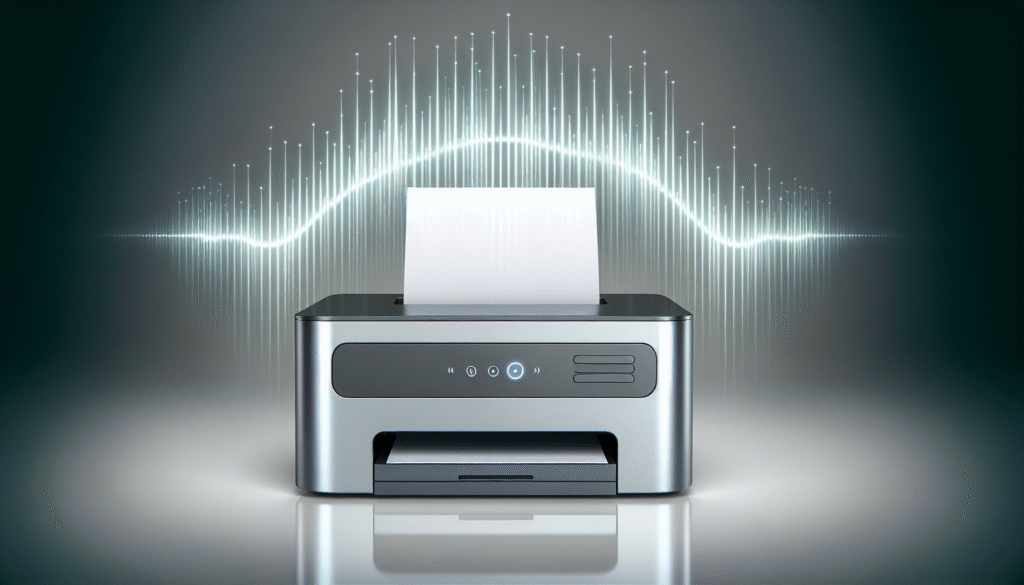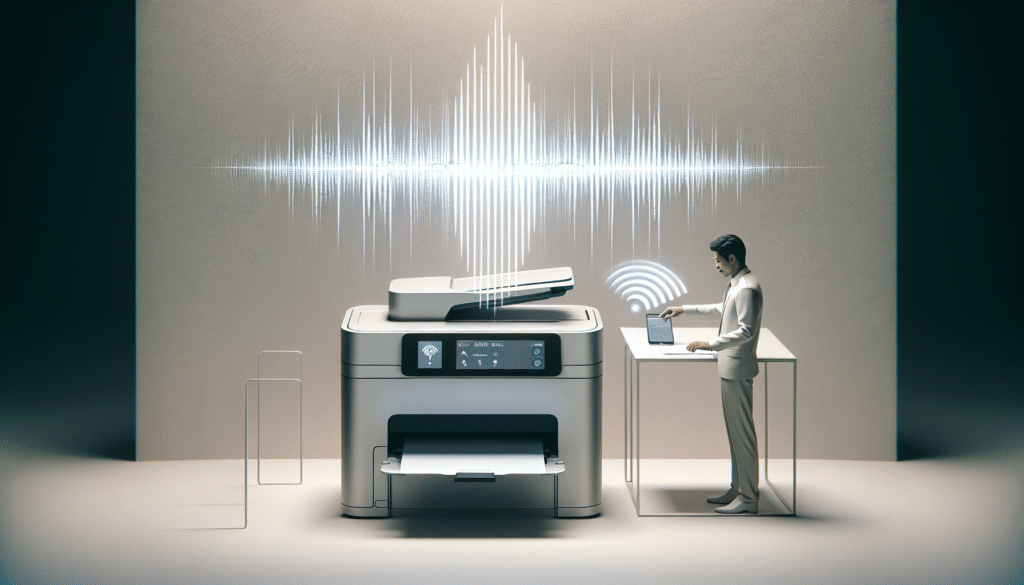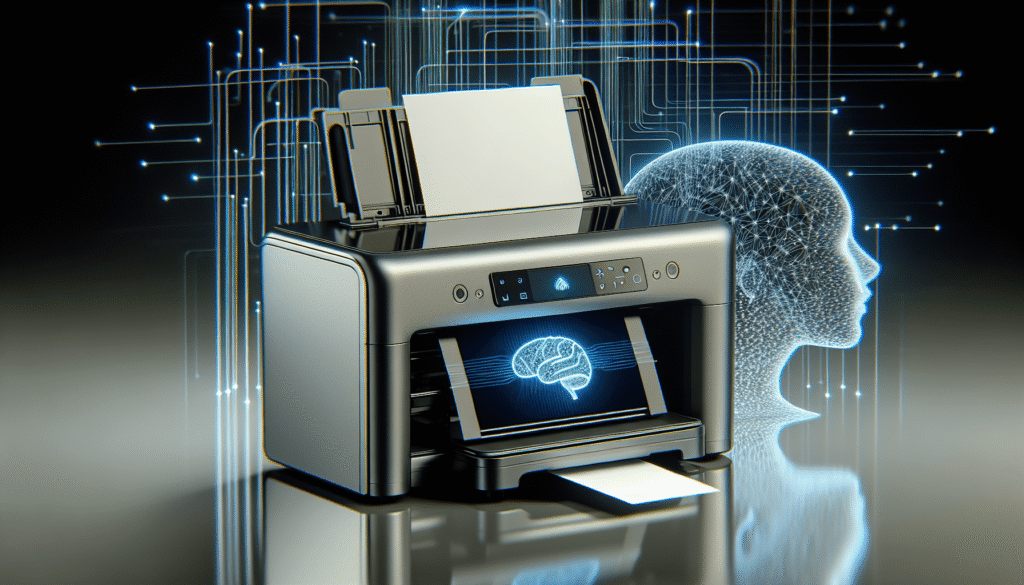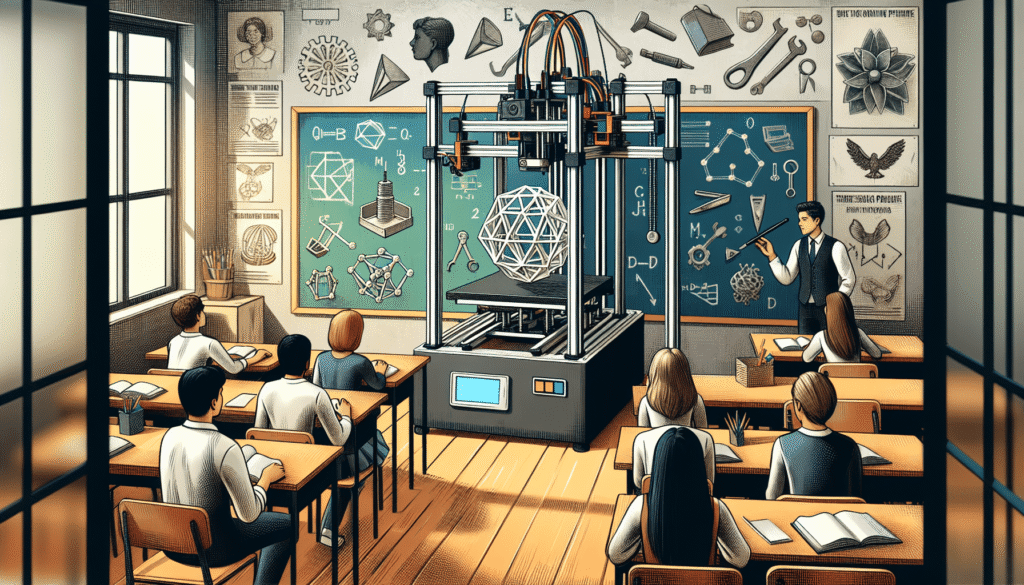Have you ever found yourself frantically searching for the right cable to connect your computer to the printer, only to encounter yet another dreaded error message, just when your deadline looms ominous and unapologetic? I’ve been there too. Well, perhaps those days are numbered. Enter the realm of voice-activated printing, where the convenience of speaking your print commands alleviates the traditional troubles of our never-ending technological tango.

What is Voice-Activated Printing?
Voice-activated printing involves using AI technology to control a printer using voice commands. This method turns mundane tasks into surprisingly straightforward processes, as you can command your device to, say, “Print my shopping list” without lifting a finger. It’s like having a diligent assistant at your beck and call, eager to assist, and it can be both delightful and peculiar that something otherworldly is actually listening to you—intently—and responding.
The Mechanics Behind the Magic
At its core, voice-activated printing employs voice recognition software integrated with AI assistants, like Amazon’s Alexa or Google Assistant. These assistants interpret your vocal commands through complex algorithms, transforming them into actionable tasks that your printer can comprehend. It sounds impressive—and it is—but let’s not imagine a room full of logical robot minds. Rather, it’s more like a very clever set of algorithms working together.
Here’s a simple illustration of that workflow:
| Task | Process Involved |
|---|---|
| Speech Recognition | AI assistant identifies commands spoken by the user. |
| Command Interpretation | Assistant translates spoken words into tasks. |
| Task Execution | Printer performs the designated print task. |
It’s intriguing to think how this marvel comes together, keeping the complexity under wraps while all I need to do is utter my whims and desires.
The Benefits of Voice-Activated Printing
Even if you have all the dexterity of a long-time office worker, the array of benefits voice-activated printing offers makes one pause and wonder how we ever lived without it.
Convenience at Its Finest
Gone are the days of fiddling with settings to find the perfect print alignment. With voice activation, I simply tell my assistant to “print double-sided” or “use grayscale,” and the work is as good as done. It’s liberating to no longer be tethered to traditional print setups—admittedly freeing enough to make one giddy.
Accessibility Innovation
Voice-activated printing isn’t just a techy luxury; it’s a bastion of accessibility for many users. Those with mobility impairments or fine motor skill difficulties benefit greatly from technology that doesn’t require physical interaction with devices. It democratizes technology usage, allowing a broader swath of people to access previously exclusive tools.
Save Time and Reduce Errors
Voice-activated printing simplifies multitasking. Imagine stirring your favorite soup while commanding your assistant to print your to-do list. One doesn’t have to abandon life’s simple pleasures to attend to tedious tasks. Further, by removing manual inputs, it effectively reduces common errors like incorrect printer settings, thereby leading to fewer reprints and more trees saved.

How AI Assistants Make It Possible
The feats of modern AI assistants were, not so long ago, confined to the realms of science fiction. I still chuckle thinking about how these virtual presences, hidden within my gadgets, have become trusted fixtures in my life.
Speech Recognition and Natural Language Processing
Understanding speech might seem simple to us, laden with innate empathy and cultural context. For AI, it’s an intricate dance of parsing intonation, vocabulary, and meaning. These systems decipher a variety of accents, speeds, and pronunciations—all while maintaining the contextual understanding required to perform relevant tasks. This wizardry owes its existence to natural language processing, bringing computers closer to human interaction than ever before.
Continuous Learning and Adaptation
The best part about my AI helper? It learns! With every command, it becomes more attuned to my specific ways of interacting. Instead of having to teach it like an unruly puppy incessantly, these systems remember my usual requests and adapt accordingly. Let’s just say, if my printer had ears, it’d probably roll its eyes less each day.
How to Set Up Voice-Activated Print Commands
Setting up voice-activated printing isn’t as daunting as it seems. Once again, necessity makes for the finest teacher, and a touch of patience never hurts—good thing, too, because patience isn’t exactly my primary virtue.
Pairing Devices
Firstly, ensure your printer is compatible and connected to the same Wi-Fi network as your voice assistant. This step is as crucial as ensuring your phone charger is in the same room as you lest all is lost when your battery runs low.
Once devices are paired, you may need an app or skill to make the connection between your assistant and the printer seamless. Think of it as linking two delightful but hesitant friends at a party.
Configuring Commands
You’ll usually need to configure specific print commands, ensuring they’re recognized by your assistant. Here’s where you can get creative— do you prefer saying, “Time to print!” over “Print, please”? The world is your oyster; just make sure the phrasing behaves with your device’s understanding.
Testing the Setup
Before throwing a parade in its honor, it’s wise to test the setup with a casual command—”Print my grocery list,” perhaps. This helps to confirm connectivity, command recognition, and subsequent printing before any important documents come into play. Believe me, it’s a step I’d rather not skip; having sent three different grocery lists to the wrong printer on separate occasions.
Potential Challenges and Solutions
Sure, voice-activated printing isn’t perfection embodied. Like any burgeoning technology, it has its own set of hiccups and cavils.
Privacy Concerns
Having devices listen intently can be unsettling. The question of privacy looms large, despite assurances that these devices only ‘hear’ and not actively ‘listen.’ Being aware of and managing the permissions and settings provides an added layer of security and peace of mind, like hiding a spare key under a false rock.
Connectivity Issues
As great as a wireless world sounds, it does depend heavily on the strength of your connectivity. Lost signals or intermittent Wi-Fi can disrupt the printing process. Ensuring robust network conditions and maintaining your hardware with regular updates can mitigate most of these issues.
Compatibility
Given the great number of printer brands and AI assistants, they may not always play nicely. That’s like trying to host a dinner party where the dishwasher refuses to acknowledge the guest list. Checking compatibility before initial setup saves both time and unexpected meltdowns.
The Future of Voice-Activated Printing
To envision what lies ahead for voice-activated printing is akin to opening Pandora’s box of endless possibilities, each more tantalizing than the last.
Expanded AI Integration
With time, AI integration will deepen, simplifying complex print tasks further—think of printing directly from cloud storage with just one command. I am excited about AI’s potential to anticipate needs, perhaps even printing items of interest before I even think to ask.
Advanced Personalization
Future iterations might bring more personalization, offering prints with customized formats and templates suitable to my tastes. Today, I get to merely converse with my assistant, but tomorrow, who knows if it won’t also serve as a collaborative partner in curating my print outputs?
Enhanced Accessibility Features
As AI grows more adaptive, it will ultimately cater to diverse needs better. Be it providing options for the visually or auditory impaired, or adjusting language preferences dynamically, the world of voice-activated printing could encompass an even wider audience—a delightful prospect for all.
Conclusion
By this point, I hope you’ve become as intrigued and charmed by the marvel of voice-activated printing as I have. It stands to revolutionize the way we interact with our technology—transformative in an almost theatrical sense, yet profoundly useful in my day-to-day endeavors.
While it may not replace the satisfaction of hearing a printer whirr to life through manual effort, it adds an element of futuristic anticipation to every spoken instruction. It’s about time our words held weight beyond conversations, embodying command and creativity in equal measure. To speak is to print, or rather, to employ technology that does so at my behest, promising a glimpse into the delightful possibilities of a future made audible. Who knew printing could become so sartorially extravagant?


